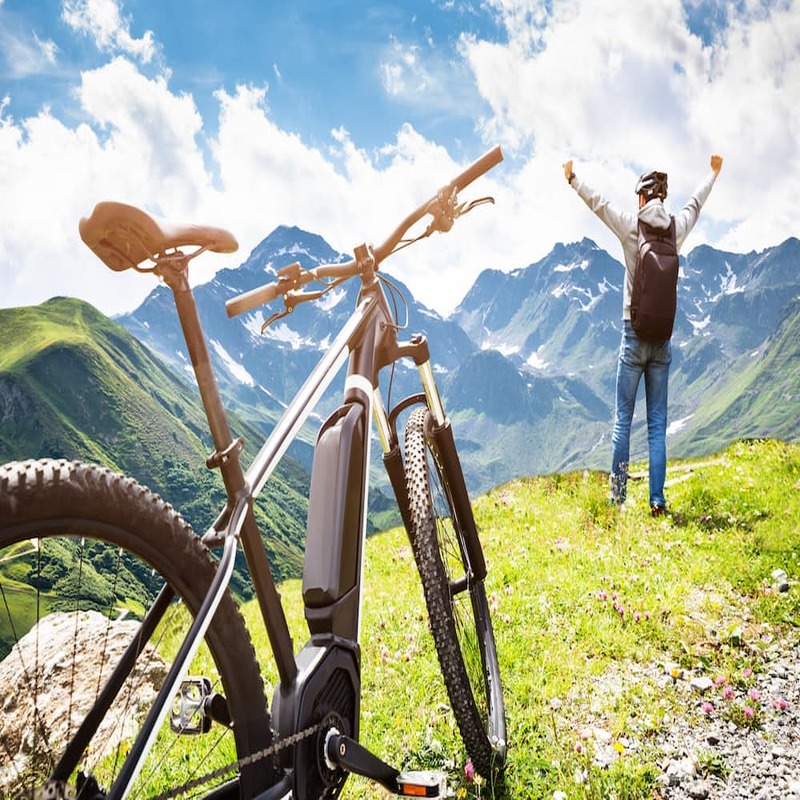Bicycles have fascinated people for over a century. With varying designs and purposes, cyclists can achieve different speeds. Understanding how fast a bicycle can go involves multiple factors. These include rider capability, terrain type, and the bicycle’s design. Moreover, the advancements in technology and materials have significantly impacted how fast bicycles can travel. Consequently, it’s essential to explore the factors influencing a bicycle’s speed, the top speeds recorded, and how riders can maximize their velocity.
Factors Influencing Bicycle Speed
Several factors affect how fast a bicycle can go. Among these factors, rider fitness level is paramount. Physical conditioning plays a crucial role. A cyclist with better endurance can maintain higher speeds over time. Regular training can lead to increased cardiovascular fitness, which enhances overall performance. Thus, fitness is a critical aspect of cycling speed.
Aerodynamics
Another significant factor to consider is aerodynamics. Cyclists can reduce wind resistance by adopting certain positions. For example, leaning forward while cycling helps to streamline the body. Additionally, specialized gear such as aerodynamic helmets can also boost speed. Cycling outfits designed to reduce drag further contribute to faster rides. Therefore, aerodynamic considerations are vital for increasing bicycle performance.
Gear and Equipment
The type of bicycle and equipment used also contributes to speed. Racing bicycles are built for performance, with lightweight frames and thin tires. These design elements facilitate faster rides over smooth surfaces. Conversely, mountain bikes are heavier and built for rough terrain, limiting speed. Additionally, tire pressure and type can significantly impact how quickly a bicycle moves. Properly inflated and high-performance tires reduce rolling resistance. Thus, understanding gear and equipment is essential for maximizing speed.

Top Speeds Achieved
Bicycle speed records have fascinated enthusiasts and the general public alike. The highest speeds ever recorded are astonishing. Professional cyclists in competitive settings can achieve remarkable velocities. During the world record for speed on a flat surface, cyclists reached over 80 miles per hour. Furthermore, during descents, speeds can exceed those benchmarks significantly. This showcases the potential of human effort combined with bicycle capabilities.
Professional Cyclists
Professional cyclists often break speed records due to their extensive training. These athletes employ meticulous techniques to enhance performance. They understand the importance of pacing and endurance during long races. Maintaining high speeds for prolonged periods takes skill and experience. Moreover, professional cyclists regularly prepare for specific racing conditions. This preparation helps them achieve peak performance during competitions.
Speed Records
The official speed records are prominently showcased, highlighting extraordinary achievements. In 1995, the World Human-Powered Speed Challenge took place in Nevada. There, a modified bicycle achieved an impressive speed of 83.13 miles per hour. This remarkable feat demonstrates the potential of unique designs coupled with rider expertise. These records inspire both amateur and professional cyclists to push their limits. Consequently, seeking speed records has become motivating for many.
Maximizing Bicycle Speed
To achieve optimal speed, cyclists can implement several strategies. First, optimizing body position is crucial. A streamlined position reduces wind resistance significantly. Furthermore, investing in lightweight bicycles can enhance performance. Additionally, cyclists should focus on gear selection tailored for specific conditions. Using the right gears allows for efficient riding on varying terrains.
Training
Regular training regimens are vital for cyclists. These routines should incorporate strength, endurance, and speed training. Incorporating intervals into workouts is beneficial. By alternating between high-intensity bursts and recovery, cyclists can boost their overall performance. Consistency in training leads to noticeable improvements in speed capabilities. A comprehensive training plan tailored to individual strengths helps maximize potential.
Nutrition
Nutrition also plays a significant role in cycling speed. Eating a balanced diet improves overall health and performance. Proper hydration is equally important, especially during long rides. Electrolytes help maintain energy levels, particularly during strenuous activities. Consuming the right nutrients can make a considerable difference. In this way, cyclists can sustain higher speeds for longer durations.

Innovations in Bicycle Design
Over the years, innovations have revolutionized bicycle designs. Materials have evolved, leading to lighter and stronger bicycles. Carbon fiber has become a popular choice for high-performance models. Additionally, advancements in braking systems enhance stopping power without compromising speed. Therefore, investing in modern technologies can lead to faster rides.
Frame Materials
The choice of frame material heavily influences bicycle performance. Aluminum is lightweight yet sturdy, making it a popular choice for various cyclists. However, carbon fiber is the preferred material for serious competitors. Its strength-to-weight ratio allows for optimal performance. In contrast, steel bicycles are durable but tend to be heavier. Consequently, understanding frame materials can greatly impact a cyclist’s speed.
Wheel Design
The design of wheels has also greatly improved. Aerodynamic wheels cut through air resistance more efficiently. Moreover, deeper rims reduce drag, allowing cyclists to reach higher speeds. Different wheel sizes cater to specific riding styles, affecting overall performance. As a result, investing in high-quality wheels can enhance a cyclist’s speed.
Terrain Effects
The type of terrain greatly affects bicycle speed. Cyclists can experience different riding conditions, from smooth roads to rugged trails. Each surface presents unique challenges that impact performance. For instance, flat roads generally allow for higher speeds. Conversely, uphill climbs demand more energy, reducing velocity.
Road Cycling
Road cycling occurs primarily on paved surfaces, favoring speed. Ideal for competitive events, these surfaces offer minimal resistance. Cyclists can reach impressive speeds with a well-tuned bicycle. Races held on smooth roads often showcase the fastest recorded speeds. Therefore, road cycling is a domain where speed thrives.
Off-Road Cycling
In contrast, off-road cycling presents varied challenges. Terrain such as dirt trails and rocky paths can significantly impede speed. Notably, mountain bikes are designed for these conditions but sacrifice speed for stability. Further, natural obstacles can reduce momentum and elevate the need for maneuverability. As such, mountain biking focuses more on technique than sheer speed.

The Future of Bicycle Speed
The cycling world is ever-evolving. Innovations continue to emerge, pushing the boundaries of what’s possible. Advancements in technology promise exciting prospects for bicycle speed. Research in aerodynamics and materials enhances performance constantly. These improvements may redefine how fast bicycles can go, changing the sport’s landscape.
Electric Bicycles
Electric bicycles are gaining traction and transforming the speed scene. With the addition of a motor, riders can achieve remarkable speeds without solely relying on physical effort. This technology caters to those who may struggle with traditional cycling. While electric bicycles may alter perceptions, they open the sport to a broader audience.
Future Innovations
Looking toward the future, potential breakthroughs in design abound. Concepts that utilize lightweight materials and enhanced aerodynamics are already in development. Additionally, improvements in smart technology may assist cyclists in optimizing performance. As innovations unfold, the possibilities for achieving higher speeds seem limitless. Engaging in cycling at all levels will continue to evolve dramatically.
In conclusion, bicycles can reach impressive speeds, influenced by various factors. From rider fitness and equipment to terrain conditions, each element plays a pivotal role. Understanding these aspects helps cyclists improve their performance. Moreover, the future of bicycle design and technology promises exciting developments. Whether for competitive racing or casual leisure, exploring the speed of bicycles will continually captivate enthusiasts. The journey toward faster cycling experiences remains an ever-present adventure for all.
Conclusion: The Endless Possibilities
The speed at which a bicycle can travel is influenced by numerous factors. Types of bikes, environmental conditions, and rider fitness all play crucial roles. With advancements in technology, the possibilities for achieving high speeds are constantly expanding.
Cycling is not just about speed; it’s also about enjoyment and health. As cyclists strive to improve their speeds, they also embrace the joys of riding. The combination of personal achievement and technological progress continues to shape the biking community.
Whether you’re a novice cyclist or a seasoned competitor, the journey of discovering speed on two wheels is ever-evolving. Understanding the elements that affect speed can empower cyclists to make informed choices. Keeping an eye on new developments can spark inspiration for future adventures on the bike. Riding, after all, is not merely about destination but also the exhilaration of the journey itself.


